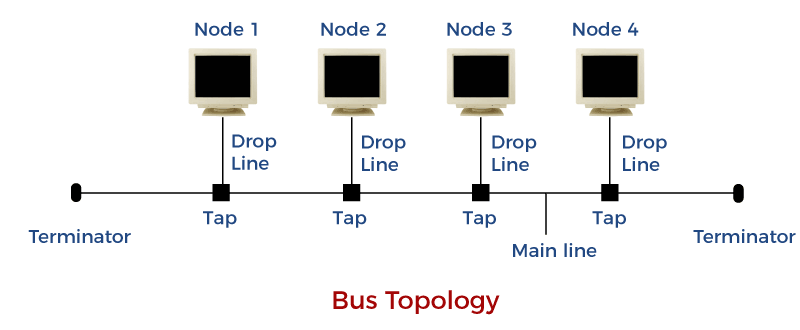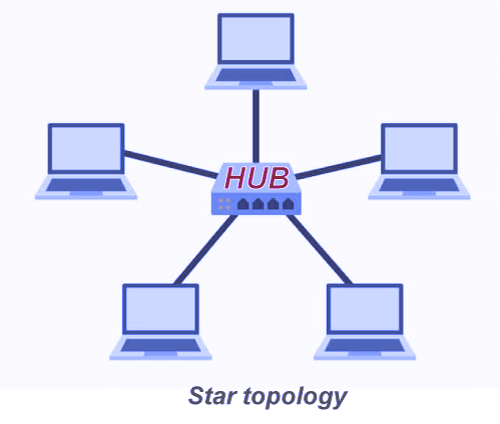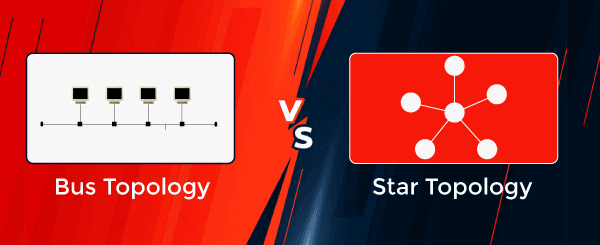Tutorial
Physical Layer
Data Link layer
Network Layer
Routing Algorithm
Transport Layer
Application Layer
Network Security
Misc
- Router
- OSI vs TCP/IP
- TCP vs UDP
- Transmission Control Protocol
- TCP port
- IPv4 vs IPv6
- ARP Packet Format
- ARP Table
- Working of ARP
- FTP Client
- FTP Commands
- FTP Server
- I2C Protocol
- Sliding Window Protocol
- SPI Protocol
- IP
- ARP Commands
- ARP
- Address Resolution Protocol
- ARP and its types
- TCP Retransmission
- CAN protocol
- HTTP Status Codes
- HTTP vs HTTPS
- RIP Protocol
- UDP Protocol
- ICMP Protocol
- MQTT protocol
- OSPF Protocol
- Stop and Wait Protocol
- IMAP Protocol
- POP Protocol
- CIFS
- DAS
- DIMM
- iSCSI
- NAS (Network Attached Storage)
- NFS
- NVMe
- SAN
- Border Gateway Protocol
- Go-Back-N ARQ
- RJ Cable
- Difference between Connection-Oriented and Connectionless Service
- CDMA vs. GSM
- What is MAC Address
- Modem vs. Router
- Switch Vs. Router
- USB 2.0 vs 3.0
- Difference between CSMA CA and CSMA CD
- Multiple access protocol- ALOHA, CSMA, CSMA/CA and CSMA/CD
- URI vs URL
- IMAP vs. POP3
- SSH Meaning| SSH Protocol
- UTP vs STP
- Status Code 400
- MIME Protocol
- IP address
- proxy server
- How to set up and use a proxy server
- network security
- WWW is based on which model
- Proxy Server List
- Fundamentals of Computer Networking
- IP Address Format and Table
- Bus topology and Ring topology
- Bus topology and Star topology
- Circuit Switching and Packet switching?
- Difference between star and ring topology
- Difference between Router and Bridge
- TCP Connection Termination
- Image Steganography
- Network Neutrality
- Onion Routing
- Adaptive security appliance (ASA) features
- Relabel-to-front Algorithm
- Types of Server Virtualization in Computer Network
- Access Lists (ACL)
- What is a proxy server and how does it work
- Digital Subscriber Line (DSL)
- Operating system based Virtualization
- Context based Access Control (CBAC)
- Cristian's Algorithm
- Service Set Identifier (SSID)
- Voice over Internet Protocol (VoIP)
- Challenge Response Authentication Mechanism (CRAM)
- Extended Access List
- Li-fi vs. Wi-fi
- Reflexive Access List
- Synchronous Optical Network (SONET)
- Wifi protected access (WPA)
- Wifi Protected Setup (WPS)
- Standard Access List
- Time Access List
- What is 3D Internet
- 4G Mobile Communication Technology
- Types of Wireless Transmission Media
- Best Computer Networking Courses
- Data Representation
- Network Criteria
- Classful vs Classless addressing
- Difference between BOOTP and RARP in Computer Networking
- What is AGP (Accelerated Graphics Port)
- Advantages and Disadvantages of Satellite Communication
- External IP Address
- Asynchronous Transfer Mode (ATM)
- Types of Authentication Protocols
- What is a CISCO Packet Tracer
- BOOTP work
- Subnetting in Computer Networks
- Mesh Topology Advantages and Disadvantages
- Ring Topology Advantages and Disadvantages
- Star Topology Advantages and Disadvantages
- Tree Topology Advantages and Disadvantages
- Zigbee Technology-The smart home protocol
- Network Layer in OSI Model
- Physical Layer in OSI Model
- Data Link Layer in OSI Model
- Internet explorer shortcut keys
- Network Layer Security | SSL Protocols
- Presentation Layer in OSI Model
- Session Layer in OSI Model
- SUBNET MASK
- Transport Layer Security | Secure Socket Layer (SSL) and SSL Architecture
- Functions, Advantages and Disadvantages of Network Layer
- Protocols in Noiseless and Noisy Channel
- Advantages and Disadvantages of Mesh Topology
- Cloud Networking - Managing and Optimizing Cloud-Based Networks
- Collision Domain and Broadcast Domain
- Count to Infinity Problem in Distance Vector Routing
- Difference Between Go-Back-N and Selective Repeat Protocol
- Difference between Stop and Wait, GoBackN, and Selective Repeat
- Network Function Virtualization (NFV): transforming Network Architecture with Virtualized Functions
- Network-Layer Security | IPSec Modes
- Next - Prev Network-Layer Security | IPSec Protocols and Services
- Ping vs Traceroute
- Software Defined Networking (SDN): Benefits and Challenges of Network Virtualization
- Software Defined Networking (SDN) vs. Network Function Virtualization (NFV)
- Virtual Circuits vs Datagram Networks
- BlueSmack Attack in Wireless Networks
- Bluesnarfing Attack in Wireless Networks
- Direct Sequence Spread Spectrum
- Warchalking in Wireless Networks
- WEP (Wired Equivalent Privacy)
- Wireless security encryption
- Wireless Security in an Enterprise
- Quantum Networking
- Network Automation
- Difference between MSS and MTU
- What is MTU
- Mesh Networks: A decentralized and Self-Organizing Approach to Networking
- What is Autonomous System
- What is MSS
- Cyber security & Software security
- Information security & Network security.
- Security Engineer & Security Architect
- Protection Methods for Network Security
- Trusted Systems in Network Security
- What are Authentication Tokens in Network security
- Cookies in Network Security
- Intruders in Network Security
- Network Security Toolkit (NST) in virtual box
- Pivoting-Moving Inside a Network
- Security Environment in Computer Networks
- Voice Biometric technique in Network Security
- Advantages and Disadvantages of Conventional Testing
- Difference between Kerberos and LDAP
- Cyber security and Information Security
- GraphQL Attacks and Security
- Application Layer in OSI Model
- Applications of Remote Sensing
- Seven Layers of IT Security
- What is Ad Hoc TCP
- What is Server Name Indication(SNI)
Bus topology and Star topology
This article will discuss the differences between the bus and star topology in detail. In the beginning, we will learn the meanings of bus and star topology. After that, we will learn some of the differences between these two topologies.
Bus Topology:
In a Bus topology, there is a single communication line or cable shared by all the nodes in the network by drop lines and taps, as shown in the following figure:

In the above figure, the drop line connects the nodes and the mainline, using a tap to add another device to the main cable. When one computer sends a signal up the cable, all the computers on the network receive the information. Still, the message is accepted by only that computer whose address is specified in the message's address field, and the rest of the nodes reject the message.
Star Topology:
In star topology, there is a central controller called a hub. In this topology, each node in the network has a dedicated point-to-point link to this central controller device, also known as a hub. The following figure displays the working of star topology:

There is no direct link between the nodes in the above figure, and all these nodes communicate via a hub only.
Following are the comparisons between the Bus and Star topology

| Sr. No | Basis | Bus Topology | Star Topology |
|---|---|---|---|
| 1 | Connection of nodes | In a bus topology, all the nodes are connected to a single communication line with the help of drop lines and taps. | In star topology, all the nodes are connected to a central controller called a hub with a dedicated point-to-point link. |
| 2 | Expansion of nodes | In a bus topology, expansion is easier. A new node can be easily added using a connector. | In star topology, expansion is very easy. A new node can be easily connected using a central hub. |
| 3 | Chances of data Collison | In a bus topology, the chances of data collisions are very high. | In star topology, the chances of data collisions are very low. |
| 4 | Failure of a node | In a bus topology, the failure of a node does not affect the whole network. | In star topology, the failure of a node affects the whole network. |
| 5 | Fault identification and Isolation | In a bus topology, fault identification and Isolation are difficult. | In star topology, fault identification and Isolation are very easy. |
| 6 | Access Rate | Sharing a single channel results in a slower access rate in a bus topology. | Access rate is very fast as each node has a dedicated point-to-point link in a star topology. |
| 7 | Cabling Cost | In a bus topology, cabling cost is low as only a single cable is required to connect n nodes. | In star topology, cabling cost is high as n-1 cables are required to connect n nodes. |
| 8 | Signal Transmission | In a bus topology, the transmission of the signal is unidirectional | In star topology, the transmission of the signal is not unidirectional. |
| 9 | Network orientation | In a bus topology, network orientation is linear. | In star topology, network orientation is non-linear |
| 10 | Speed of data transfer | In a bus topology, the data transfer rate is slow. | In star topology, the data transfer rate is fast. |
| 11 | Congestion control | In a bus topology, the signal send from source to broadcast, and it travels to all working stations connected to cable, so there are no chances of congestion. | Star topology gives much better performance because signals don't necessarily get transmitted to all the workstations connected to the network. |
| 12 | Security | In a bus topology, any computer that is connected to a network will be able to see all the data transmissions on all the other computers. So there are no chances of security. | In a star topology, security depends on the central device. |
| 13 | Response time | In a bus topology, response time is slow. | In a star topology, response time is good. |
| 14 | Complexity | In a bus topology, easy to connect or remove nodes in a network without affecting any other node in a network. | In a star topology, average complexity because each device connects to central device with only one link only. |


